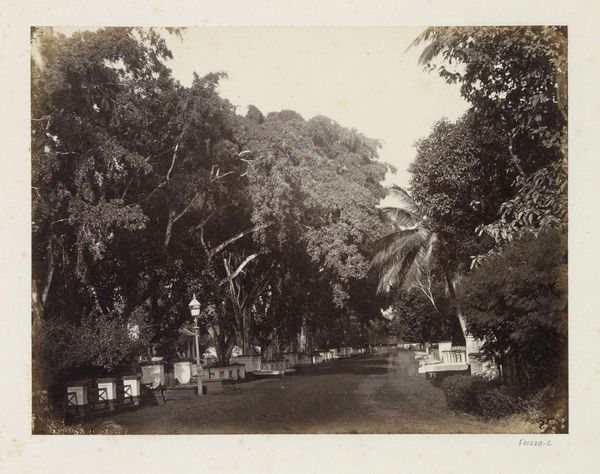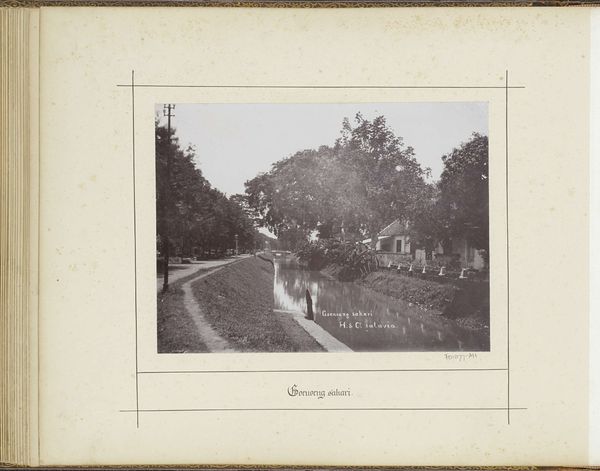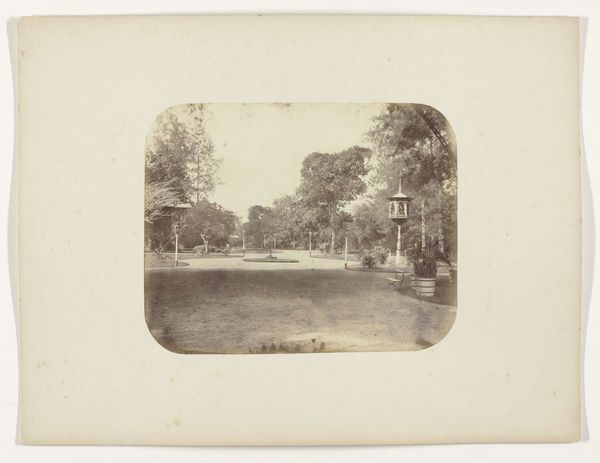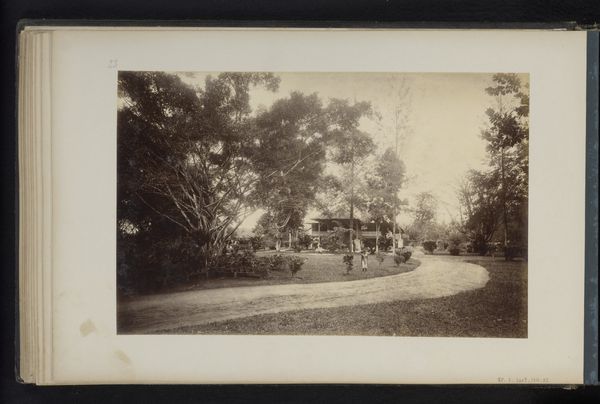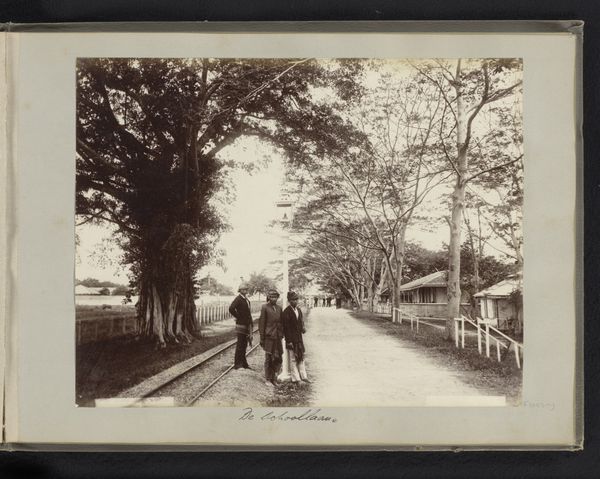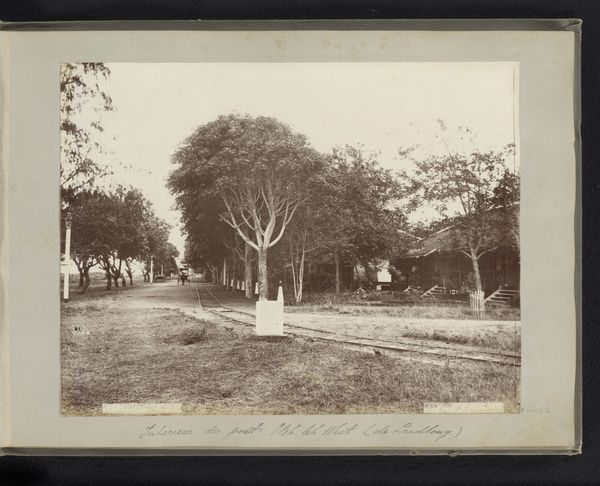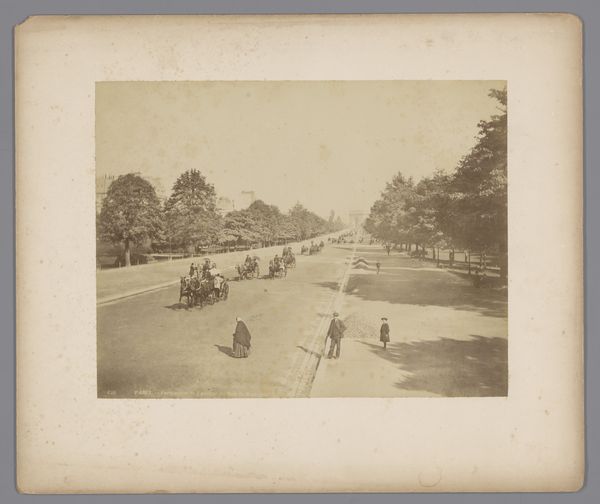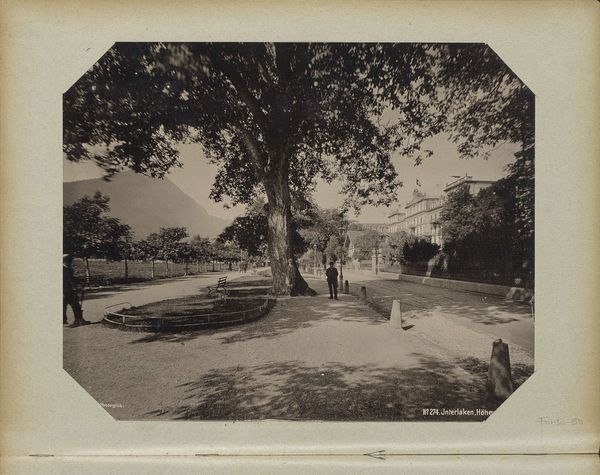
photography
#
still-life-photography
#
pictorialism
#
landscape
#
photography
#
park
#
statue
Dimensions: height 215 mm, width 139 mm
Copyright: Rijks Museum: Open Domain
Curator: Looking at Louis Oskar Grienwaldt’s photograph, "Gezicht op het park Am Wall in Bremen" from 1890, I'm immediately struck by its serene, almost dreamlike quality. Editor: Yes, it's dominated by a soft, sepia tone. The texture seems incredibly smooth and gives off an almost hazy atmosphere. What grabs my attention is the play of light and shadow across the trees. Curator: It’s interesting to note how parks such as this, particularly those containing war memorials—indicated here, faintly, by "Wall m. Kriegerdenkmal"—became central to collective memory. This photograph presents an idealised space where personal contemplation can occur. Editor: True, but notice the composition: the symmetrical framing with those two prominent trees, mirrored by their reflections in the water. And the statues in the background. Everything contributes to a balanced, structured feel. The image feels very stage-managed and formal, rather than just being a slice of everyday life. Curator: I agree that the arrangement suggests intent. The human figures placed within the frame are small but crucial: do they monumentalize history, create nostalgia for an era? Or simply enjoying leisure time in a specific historic space? The image prompts reflection on both individual experience and collective remembrance, even history itself. Editor: And think of how those tonal variations in the foreground and the background are articulated—deliberate choices in creating spatial depth and emphasizing the tonal harmonies throughout the print. It makes this work less about simple representation and more about exploring the visual possibilities of photography. Curator: Well, the technical processes would have added layers of interpretation too. What may seem a "realistic" capture is full of the symbolic power that processes themselves can wield over visual narratives, contributing to that dreamlike feeling. It prompts thinking about temporality, doesn't it? This moment captured, transformed and preserved. Editor: It does, and studying these structural aspects of composition makes one appreciate how much "meaning" is constructed through the choices of the photographer and processes that create images, even when portraying a "real" place. Curator: Indeed. Understanding this interplay between history, emotion and visual rendering offers a profound connection to the era from which the piece comes. Editor: Seeing it this way really gives a fuller appreciation for this tranquil scene from Bremen. Thanks.
Comments
No comments
Be the first to comment and join the conversation on the ultimate creative platform.
